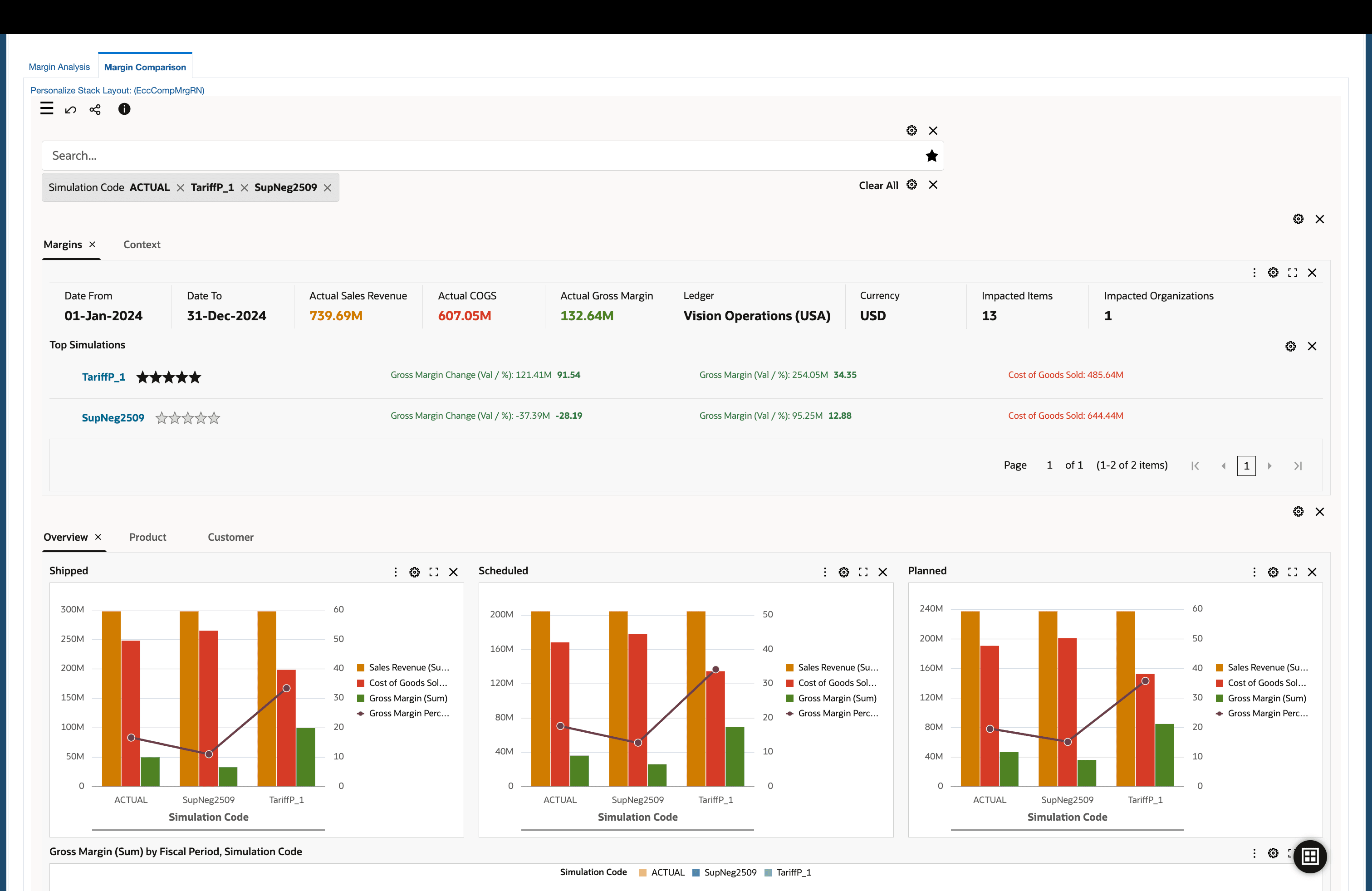Analyze Projected Margins Based on Unshipped Sales Orders
You can now review projected margins based on scheduled shipment sales orders using both current and user-defined costs. Prior to Release 12.2.15, users could only analyze margins for shipped sales orders.
Process Flow
Step 1: Set Profile: Margin Analysis Load Start Date
Ensure the profile CST: Margin Analysis Load Start Date for ECC (MM/DD/YYYY) is set to a date on or before the scheduled shipments.
Step 2: Set Profile: Load Margins for Future Shipments
Configure the profile CST: Load Margins for Future Shipments to one of the following options:
- Yes, Only Scheduled Shipments
- Yes, Both Scheduled and Planned Shipments
Step 3: Run Program: Margin Analysis Load Run.
The Margin Analysis Load Run program generates margin analysis data for scheduled shipments, using current cost to calculate COGS.
Submit the Cost Management Command Center Data Load program to load data from EBS to ECC.
Margin Comparison Dashboard with Scheduled Shipments
Steps to Enable
Step 1: Set Profile: Margin Analysis Load Start Date
Ensure the profile CST: Margin Analysis Load Start Date for ECC (MM/DD/YYYY) is set to a date on or before the plan horizon.
Step 2: Set Profile: Load Margins for Future Shipments
Configure the profile CST: Load Margins for Future Shipments to one of the following options:
- Yes, Only Scheduled Shipments
- Yes, Both Scheduled and Planned Shipments
Step 3: Set Profile: CMI: Default Currency Conversion Type
Configure the profile CMI: Default Currency Conversion Type to the currency conversion type you would like in case one is not specified when importing foreign currency planned orders from the interface.
Tips And Considerations
- Each time a margin analysis load run is executed, the loader updates the status of any previously unshipped orders that have been shipped since the last run, moving them from unshipped to shipped status.
- Since there is no actual shipping cost, the system uses the current cost as the shipping cost.
- If your setup includes both process and discrete costing organizations, the programs must be run twice, once under the process costing responsibility and once under the discrete costing responsibility. Alternatively, you can add the programs to a new request set and run them from a single responsibility.
Key Resources
- Oracle E-Business Suite News and Information: oracle.com/ebs
- Oracle E-Business Suite Product Documentation: https://docs.oracle.com/cd/E26401_01/index.htm
- Oracle University: https://www.oracle.com/education
- Oracle Support: https://www.oracle.com/support